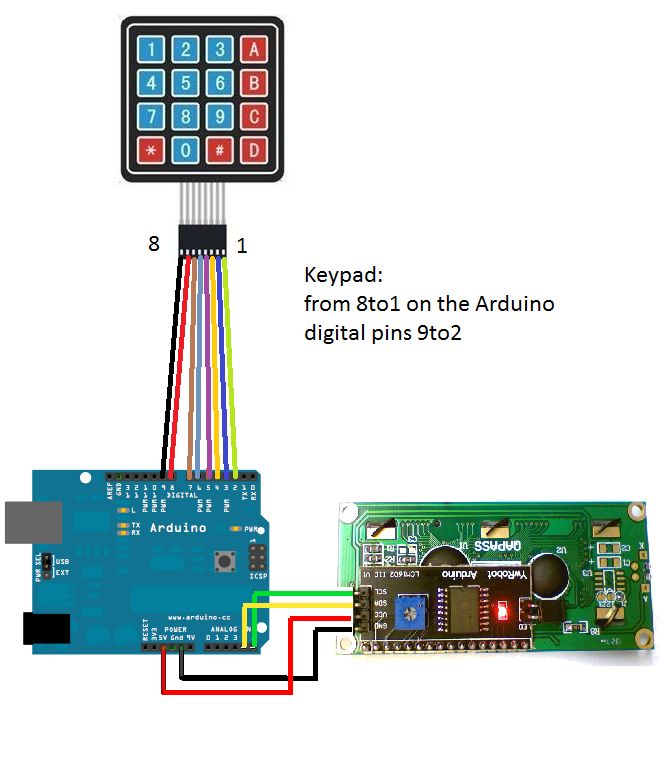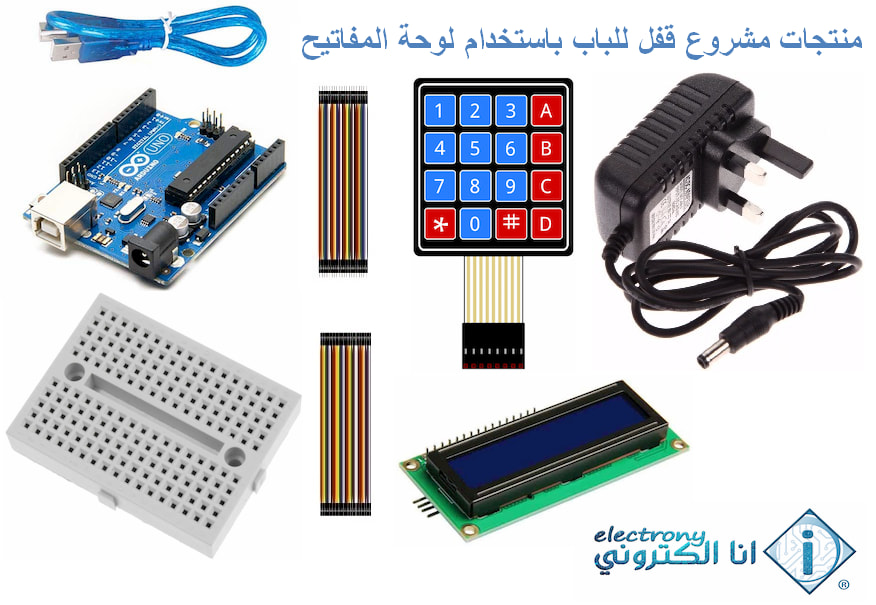#include <Keypad.h> //Libraries you can download them via Arduino IDE
#include <Wire.h>
#include <LCD.h>
#include <LiquidCrystal_I2C.h>
#define I2C_ADDR 0x27 // LCD i2c Adress and pins
#define BACKLIGHT_PIN 3
#define En_pin 2
#define Rw_pin 1
#define Rs_pin 0
#define D4_pin 4
#define D5_pin 5
#define D6_pin 6
#define D7_pin 7
LiquidCrystal_I2C lcd(I2C_ADDR,En_pin,Rw_pin,Rs_pin,D4_pin,D5_pin,D6_pin,D7_pin);
const byte numRows= 4; //number of rows on the keypad
const byte numCols= 4; //number of columns on the keypad
int code = 1366; //The code I used, you can change it
int tot,i1,i2,i3,i4;
char c1,c2,c3,c4;
//keymap defines the key pressed according to the row and columns just as appears on the keypad
char keymap[numRows][numCols]=
{
{'1', '2', '3', 'A'},
{'4', '5', '6', 'B'},
{'7', '8', '9', 'C'},
{'*', '0', '#', 'D'}
};
//Code that shows the the keypad connections to the arduino terminals
byte rowPins[numRows] = {9,8,7,6}; //Rows 0 to 3
byte colPins[numCols]= {5,4,3,2}; //Columns 0 to 3
//initializes an instance of the Keypad class
Keypad myKeypad= Keypad(makeKeymap(keymap), rowPins, colPins, numRows, numCols);
void setup()
{
lcd.begin (16,2);
lcd.setBacklightPin(BACKLIGHT_PIN,POSITIVE);
lcd.setBacklight(HIGH);
lcd.home ();
lcd.print("SurtrTech");
lcd.setCursor(9, 1);
lcd.print("Standby");
delay(2000);
}
void loop()
{
char keypressed = myKeypad.getKey(); //The getKey fucntion keeps the program runing, as long you didn't press "*" the whole thing bellow wouldn't be triggered
if (keypressed == '*') // and you can use the rest of you're code simply
{
lcd.clear();
lcd.setCursor(0, 0);
lcd.print("Enter Code"); //when the "*" key is pressed you can enter the passcode
keypressed = myKeypad.waitForKey(); // here all programs are stopped until you enter the four digits then it gets compared to the code above
if (keypressed != NO_KEY)
{
c1 = keypressed;
lcd.setCursor(0, 1);
lcd.print("*");
}
keypressed = myKeypad.waitForKey();
if (keypressed != NO_KEY)
{
c2 = keypressed;
lcd.setCursor(1, 1);
lcd.print("*");
}
keypressed = myKeypad.waitForKey();
if (keypressed != NO_KEY)
{
c3 = keypressed;
lcd.setCursor(2, 1);
lcd.print("*");
}
keypressed = myKeypad.waitForKey();
if (keypressed != NO_KEY)
{
c4 = keypressed;
lcd.setCursor(3, 1);
lcd.print("*");
}
i1=(c1-48)*1000; //the keys pressed are stored into chars I convert them to int then i did some multiplication to get the code as an int of xxxx
i2=(c2-48)*100;
i3=(c3-48)*10;
i4=c4-48;
tot=i1+i2+i3+i4;
if (tot == code) //if the code is correct you trigger whatever you want here it just print a message on the screen
{
lcd.clear();
lcd.setCursor(0, 0);
lcd.print("Welcome");
lcd.setCursor(7, 1);
lcd.print("SurtrTech");
delay(3000);
lcd.clear();
lcd.print("SurtrTech");
lcd.setCursor(9, 1);
lcd.print("Standby");
}
else //if the code is wrong you get another thing
{
lcd.clear();
lcd.setCursor(0, 0);
lcd.print("GTFO LOL");
delay(3000);
lcd.clear();
lcd.print("SurtrTech");
lcd.setCursor(9, 1);
lcd.print("Standby");
}
}
}




